No. I’m not pregnant. I thought I’d get that out of the way. One of the unintended consequences of having had 5 kids in 8 years is that whenever I say I have an announcement people automatically ask me if I’m expecting. In a way, this isn’t too far off from what I am actually announcing today, though. But first, I’d also like to get an apology out there. I’m about to use a tremendously excessive number of exclamation points. Now, onto business. Much like being pregnant, I’ve gestated this project for a solid 9 months, been terrified and thrilled, and can finally tell you all that I’ll be giving birth to a bouncing cookbook on July 19, 2016. That’s right… for all of you who have asked when I’d be coming out with a cookbook, it’s on its way! Not Your Mama’s Canning Book: Modern Canned Goods and What to Make with Them will hit the shelves -both virtual and literal- shortly before my 42nd birthday next month. I can’t think of a better present to myself than to have my dream of becoming a published cookbook author come true. I’m going to be teasing some of the photos for the recipes on instagram, twitter, and facebook. You can follow along or search those images with #NotYourMamasCanningBook. Is it wordy? Yep. But so am I, friends. You can preorder Not Your Mama’s Canning Book on Amazon, Barnes and Noble, or Indiebound. It’ll be available on shelves on July 19th, as I said. Excited much? Yes, I am, thank you!
Not Your Mama’s Canning Book is, ahem, a canning cookbook, to be sure. The first half of the book is about 40 unique (in a good way, not in a “my mom trying not to hurt my feelings if she doesn’t like my outfit” way), modern, global-inspired canning recipes. As a bonus, there are approximately eleventy million recipes included for preserving herbs and making normally ridiculously expensive boutique extracts. Now if you all could do me a favour, though, and read the next sentence in your best obnoxious television commercial voice, “But WAIT! There’s MORE!”
How many of you have canned something and had it sit on the shelf collecting dust because you weren’t quite sure what to do with it afterward? I’m looking at YOU, pickled plums. I made sure that every single canning recipe in the first half had at least one “Payoff Recipe”. In other words, each canning recipe has a corresponding Payoff Recipe to make WITH those canned goods. Would you like to see a couple of examples? Oh, please say yes!
We have Korean Barbecue Sauce. This is a recipe that one friend tested for me and swooned over repeatedly. I didn’t object. It’s sweet, it’s spicy, it’s loaded with classic Korean flavours like garlic, ginger, gochujang, Asian pear, and soy sauce, and it’s almost obscenely easy to make. This makes an incredibly satisfying beginning canner recipe, but experienced canners will make it for years just because it’s so tasty.
With that Korean Barbecue Sauce, you can make this crowd pleasing, budget friendly Korean Inspired Flank Steak Lettuce Wraps. It’s mouthwatering, flavourful, and entertaining friendly, but easy enough for a weeknight dinner. All this because you made the simple Korean Barbecue Sauce. Win/win.
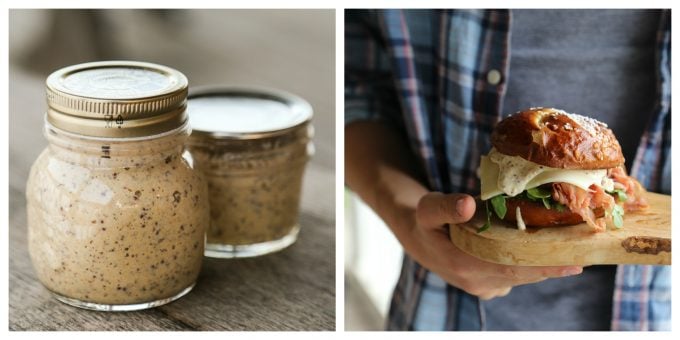
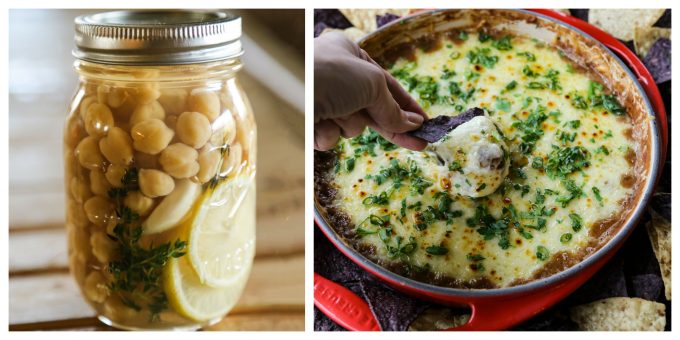
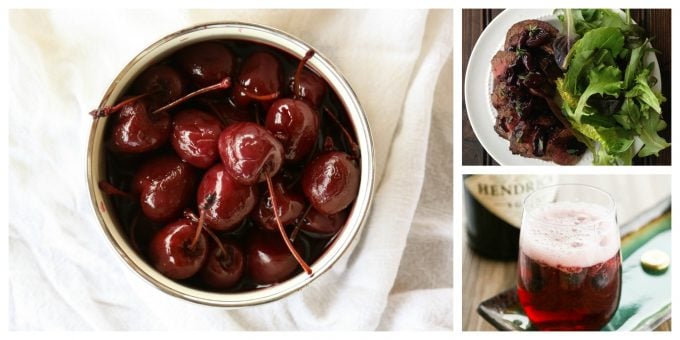
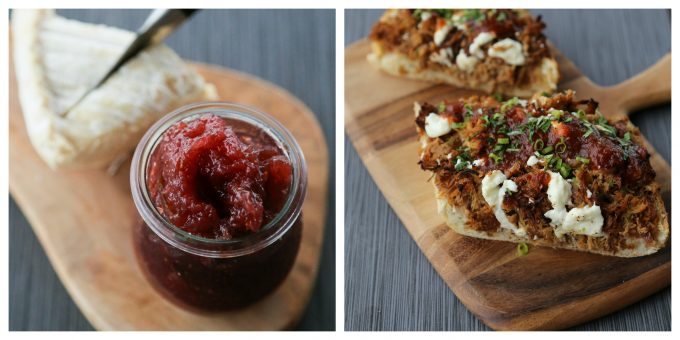
We have New York Grape Pie Filling, friends! I know that grape pies are an upstate and western New York thing, but I’m on a mission to bring it to the world. New York residents comb the countryside in the fall to find roadside stands that sell these fragrant, sweet, and tart beauties, and now people everywhere can make their own. All you need is a few pounds of Concord grapes and a little time and you’ll be living large. Use the finished pie filling to make a full sized grape pie, or do what I love best and use the book’s recipe for Mini Grape Hand Pies which tuck handily into lunches and picnic baskets.
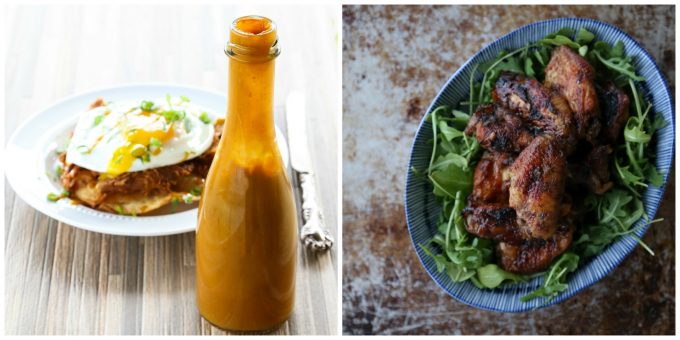
(Pictured above: Not Your Mama’s Antipasto Tray because it contains not one, not two, but FOUR different recipes from the canning portion of the book!)
Guys, most importantly, I want to thank you all for encouraging me, sticking with me here on Foodie with Family, and being part of my extended family. I couldn’t do any of this without you all being here, so I appreciate you more than I have the ability to express. Can on, friends!!!
You can pre-order Not Your Mama’s Canning Book from the following fine retailers:
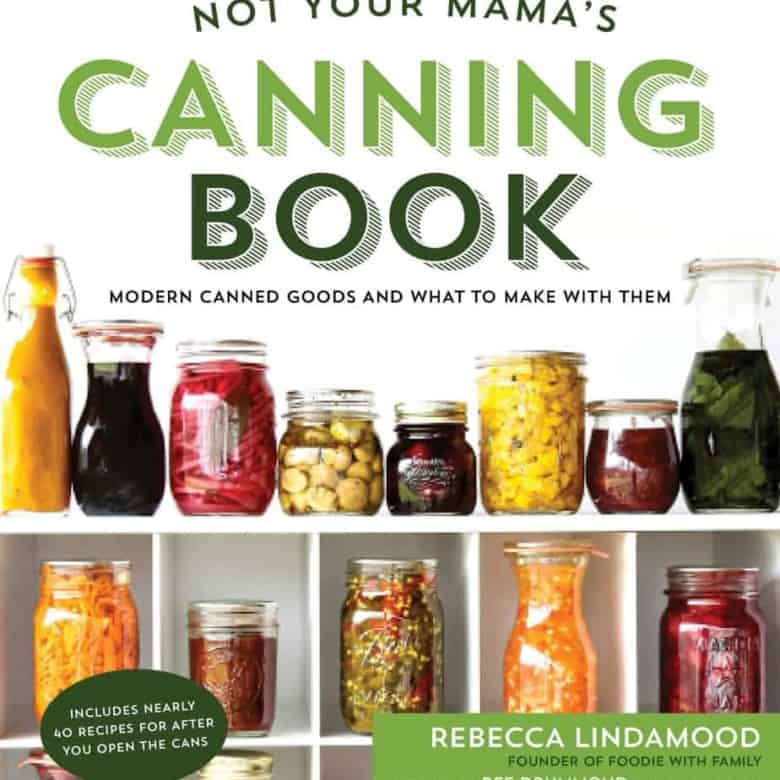
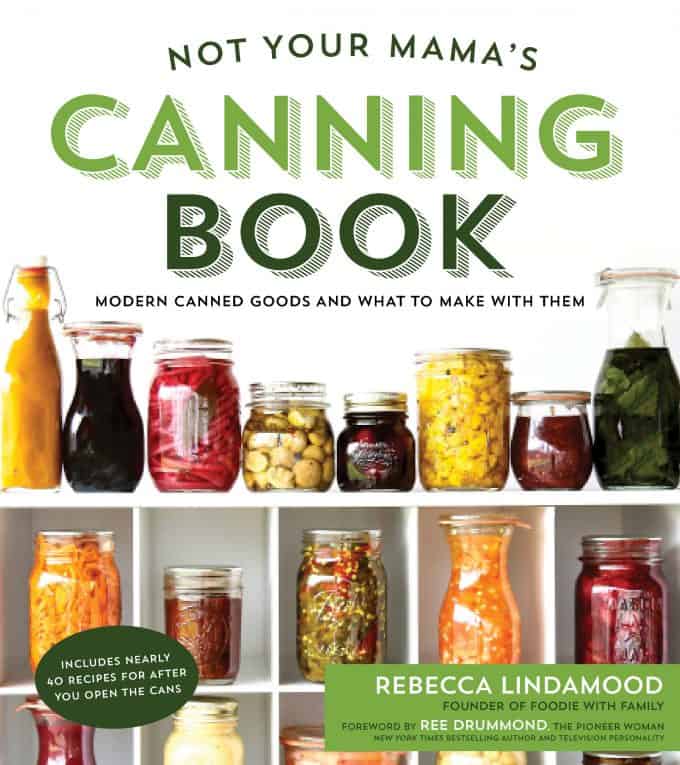
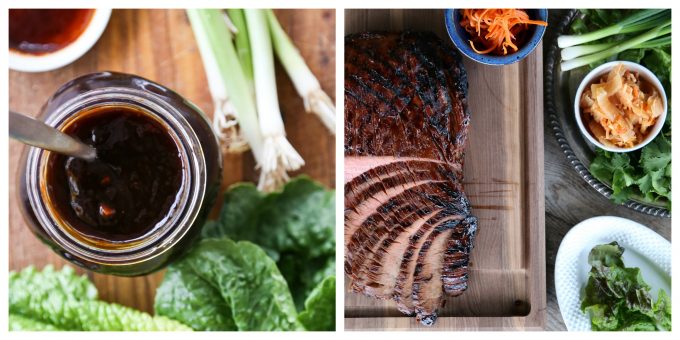
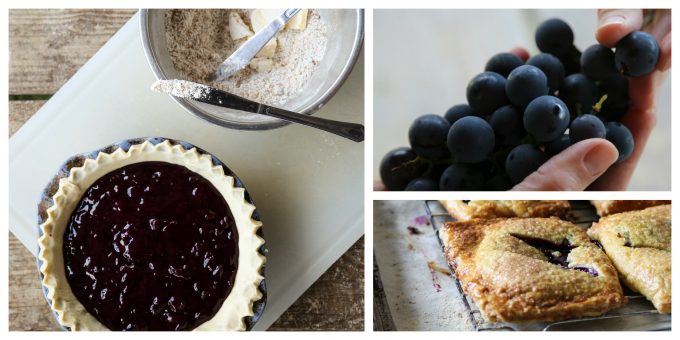
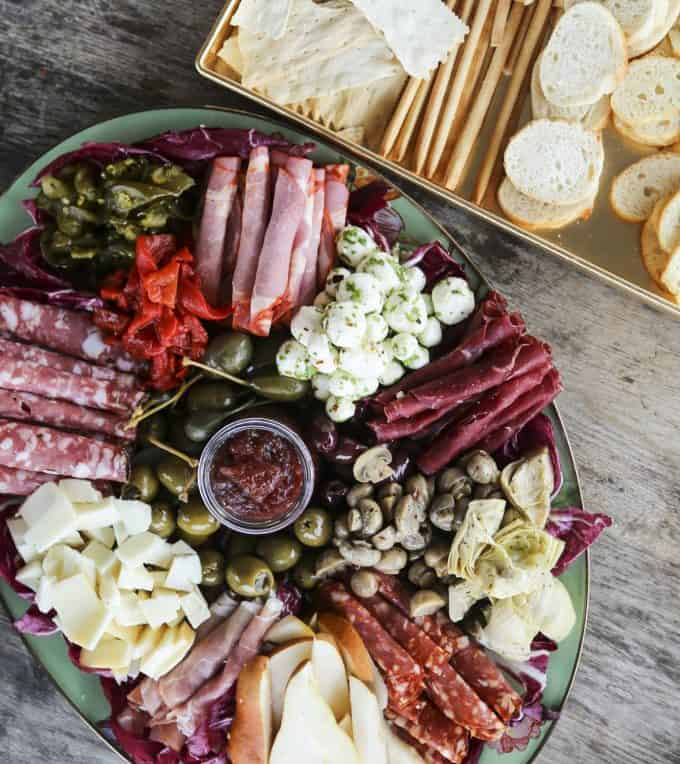






Reader's Thoughts...
Merry says
I have this in my Amazon cart, and couldn’t decide. Do I really need another canning book? Yes, yes I do! This post convinced me.
Rebecca says
HA! Thanks, Merry!!! xoxoxo
Sandra Gambino says
I just purchased Not Your Mama’s Canning Book. Am I suppose to use bottled lime and lemon or can I used fresh?
Rebecca says
I developed the recipes using bottled juice unless specified otherwise!
Lucy says
Hi there,
I am a nervous new canner. I’m loving it, but am having nightmares about botulism nightly. I’m paranoid. I know. I have read only to use tested and approved recipes. Did you have your recipes approved? If not, how do I know they are safe?
Andrea Morse says
I got your book last canning season and looked at it and put it aside. Looks like fun. Today, I started reading the pages before the recipes start and you said not to invert the jars of jam to get them to seal. I think the reason you say that is because of the bacteria that could grow? I’m not done reading that section yet, so haven’t found the reason for that. I’ve been doing that for 25 or more years and never had a problem. When I put up 50 or more jars of jam in a couple of days, water bath processing them takes a long time. Not sure what to do, now
Rebecca says
Thanks so much for contacting me, Andrea! In answer to your question, yes, inverting jars is potentially problematic. I used to do it, too, until I learned what the problem is. I go into it in the book, but I’ll touch on it briefly here. When you invert the jar to seal it, you do indeed seal the jar, but sealing the jar isn’t really the issue because botulism grows in an anaerobic environment. In other words, you may have sealed it to keep air out of it, but lack of air doesn’t guarantee that the nasties won’t grow. I’m glad that you haven’t had any issues thus far, but I’d make the switch just to be safe. Once you get into the groove, it gets much easier!
Andrea Morse says
I really want to try the whole grain dijon mustard. Is there a substitute for the white wine? Really don’t care for the taste of anything alcohol in food.
thanks
Rebecca says
It doesn’t taste like wine! Unless you have a religious or medical prohibition against using alcohol, I advise you use it. If you do have a religious or medical problem with it, I would use verjus!
Karen says
My gift to myself for my 41rst birthday next month was this book and another canning book, and I am soo excited to reiceive it in the next week or so. Started canning 2 years ago, along with a huge balcony garden, and realize the great potential of canning to stock my cupboards, all reviews look great and I’m so excited to try some practical, useful recipes:).
Rebecca says
I’m so glad to hear that, Karen! I hope you love it as much as I loved writing it and developing the recipes for it!
Marie says
Ball says not to can dried beans. Have you had your recipes scientifically tested.
Rebecca says
Hi Marie-
I consulted with the cooperative extension offices out of Cornell University and had plans to have them officially test each of the recipes but ran out of time before publication to do so. The dried beans, however, are done according to a method that is approved by Cooperative Extension and the National Center for Home Food Preservation. You can compare the method used in the book to that which is listed as an approved recipe here: http://www.clemson.edu/extension/food/canning/canning-tips/30canning-drying-legumes.html
Gina Adair says
Just wanted to ask if you ever had these tested, after publication? It would be so helpful for those of us who don’t use untested recipes. My family’s health is very important to me, as I’m sure everyone else.
Rebecca says
Hi Gina- I did not have a chance to get them tested. That said, I used approved recipes as the jumping off point for all of the recipes in here, being careful not to adjust ph and use approved times/methods taking into account viscosity, ph, approved times for particular produce/products, and more. I am confident in serving this to my family who has suppressed immune systems and they’re confident in eating it. I advise you to use your own judgement, but we’re comfortable with the recipes in here. Incidentally, there is one reader who had several of my recipes tested by her local cooperative extension so she could produce and sell them at a highly regulated farm market, and they passed. 🙂